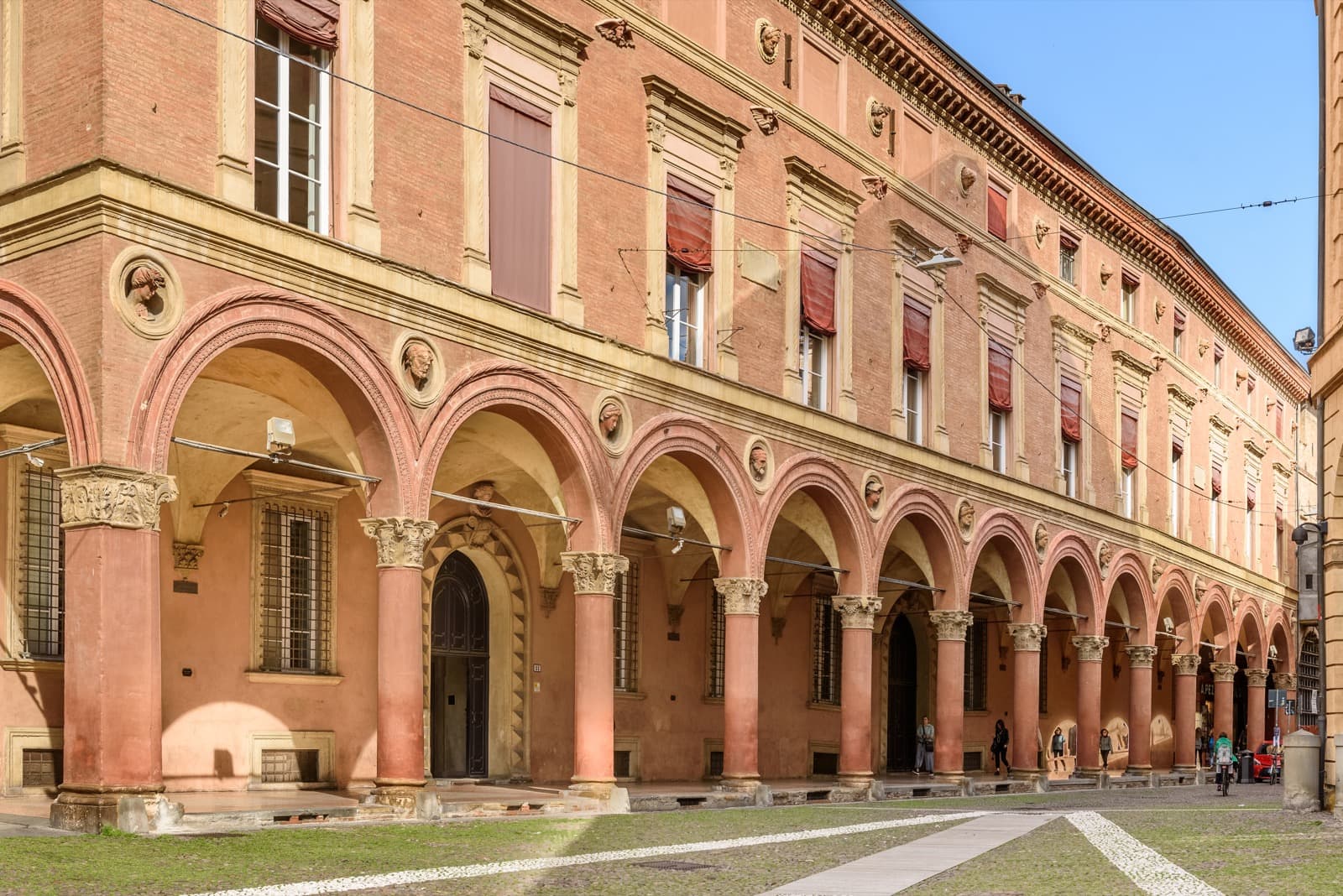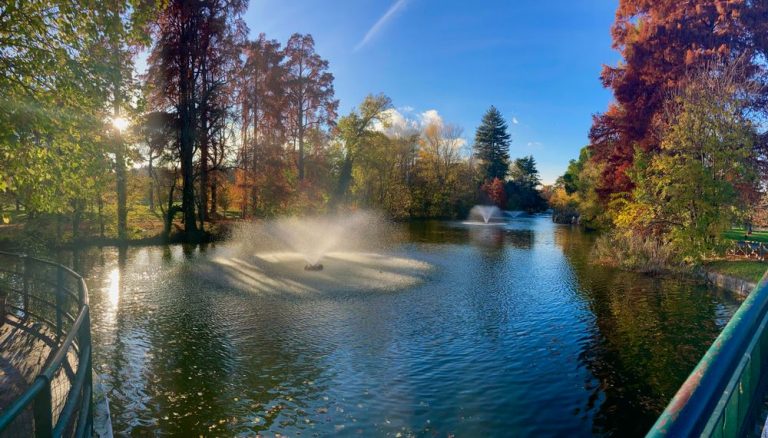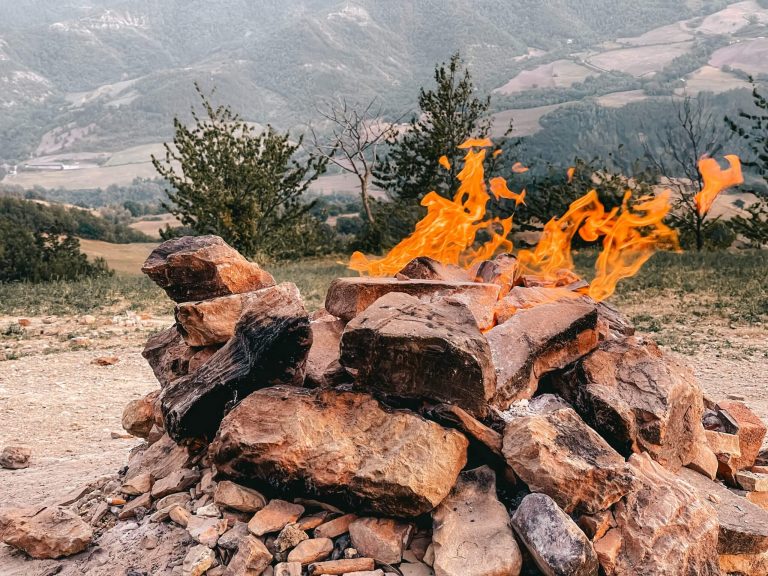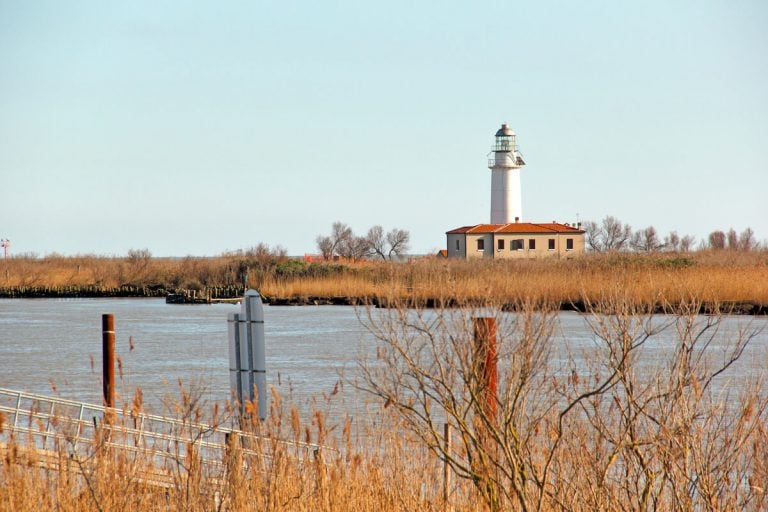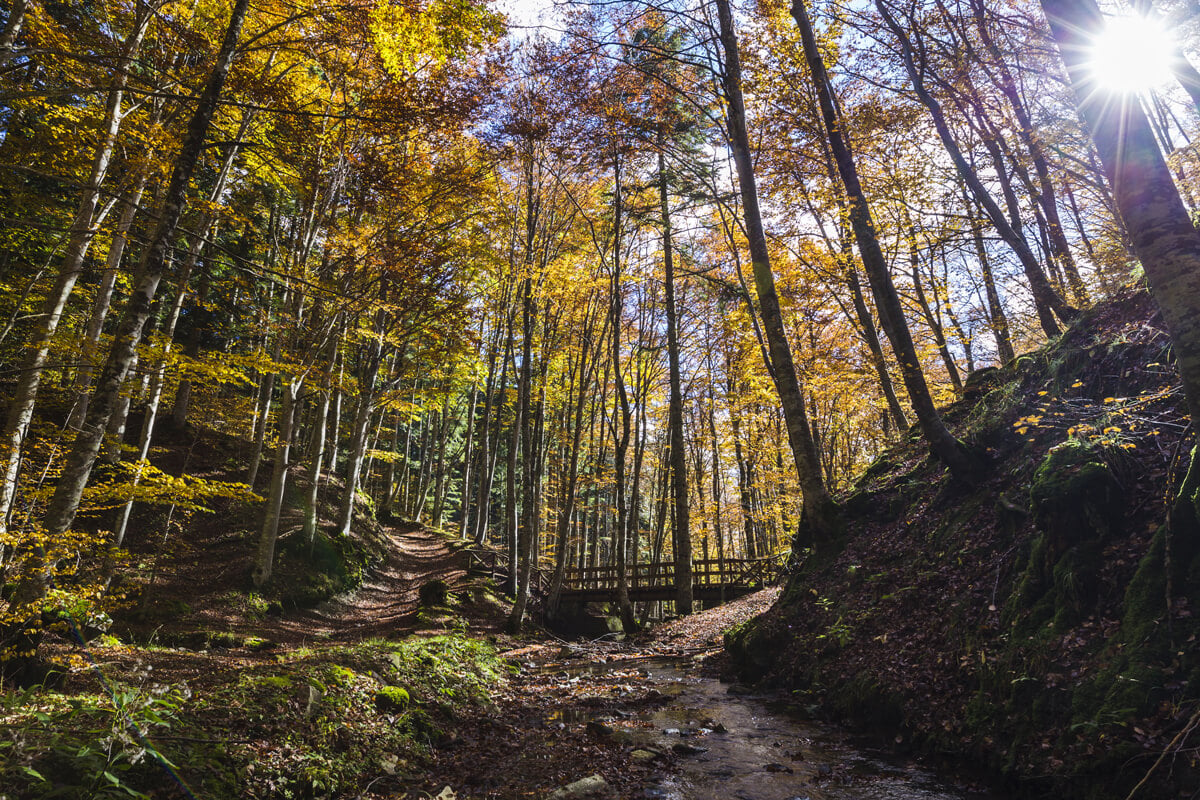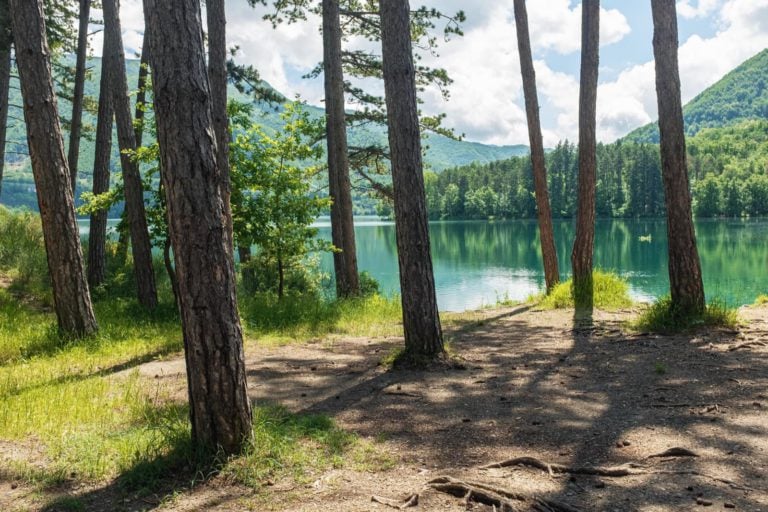Recognizable for their beauty and high value in terms of geology, biodiversity and ecosystem, there are six UNESCO natural sites in Italy, spread across the country from north to south. Emilia-Romagna boasts as many as two, including one included entirely within regional borders and one shared with other European regions and countries.
But that’s not all. Emilia-Romagna also has three MAB Reserves (an acronym for “Man And the Biosphere”), encompassing a mosaic of mountain, river and coastal areas. All of them should be explored slowly – on foot, by bike and sometimes even on horseback – to fully enjoy their wonders while respecting nature and its rhythms.
So let’s get our hiking shoes ready, and go find out where they are and how to visit them.
Sasso Fratino Ancient Beech Forests
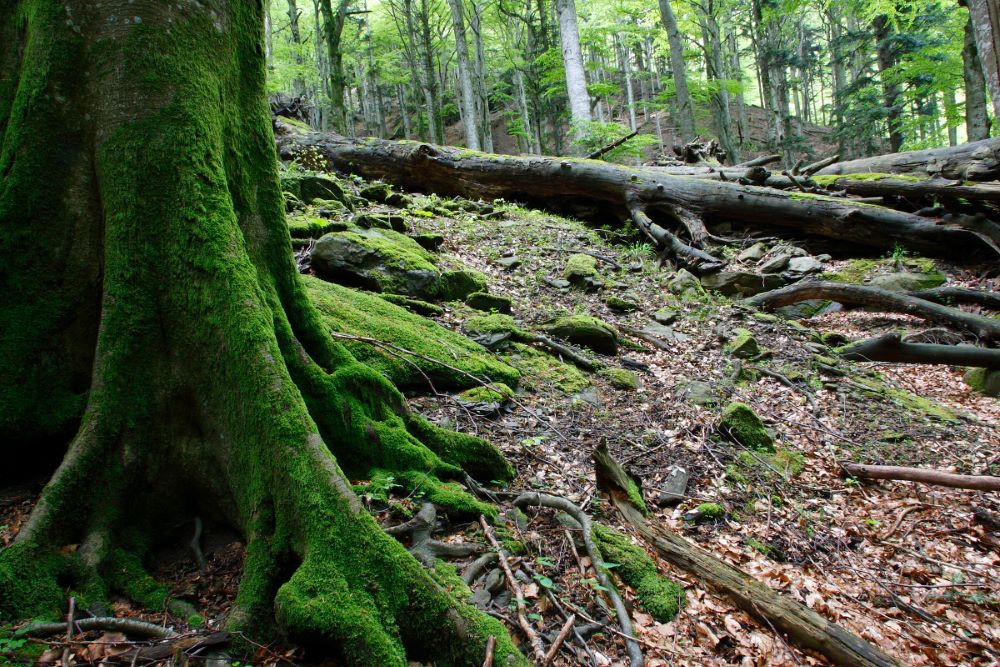
The ancient beech forests of the Casentinesi Forest National Park and the Sasso Fratino Nature Reserve are part of a so-called UNESCO serial site, that is, a group of similar heritage sites located in various places within one or more countries.
In this case we are talking about a group of forests, beech forests in fact, located in 18 different states that since 2007 have gradually been included in the site. The Sasso Fratino Reserve was recognized in 2017 because of its ecological and biological uniqueness, which it shares with other forests located in Abruzzo and Lazio.
The Sasso Fratino beech forest marks a record among Italian UNESCO heritage sites. It is in fact the largest in our country, and one of the largest in Europe. In addition to the Sasso Fratino Nature Reserve – closed to visitors – the site also covers the surrounding area, located between the towns of Bagno di Romagna and Santa Sofia (FC), where you can hike on the paths running through the park to admire its lush vegetation up close.
Speaking of vegetation, the site is home to mixed forests of silver fir and beech trees, some of which are over 500 years old. That’s why we talk about the longest-lived beech trees in Europe, among which herds of deer, fallow deer and roe deer roam freely.
Evaporitic Karst and Caves of Northern Apennines
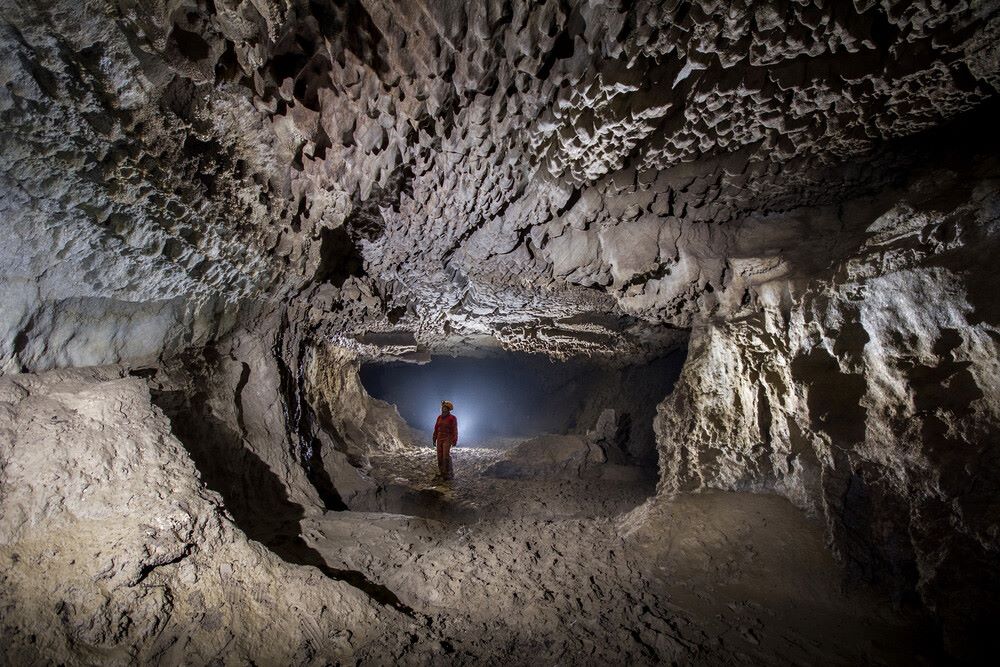
The caves and evaporitic karst of Emilia-Romagna represent another serial site, named by UNESCO in 2023. It includes seven places located within the regional borders, more precisely in the provinces of Reggio Emilia, Bologna, Rimini and Ravenna.
Where does the uniqueness of this natural heritage lie? In the words of UNESCO, it is “an unusually well-preserved and extensive epigenic gypsum (i.e., formed by a process subsequent to the original one) karst terrain.” The number of caves in this area is truly impressive: we are talking about over 900 caves spanning over more than 100 kilometers and reaching a depth of 265 meters below the ground surface.
A further record is to be found in the academic studies dedicated to the area and the phenomenon of karstification in its evaporitic rocks, the oldest and most in-depth in the world with works dating back as far as the 16th century.
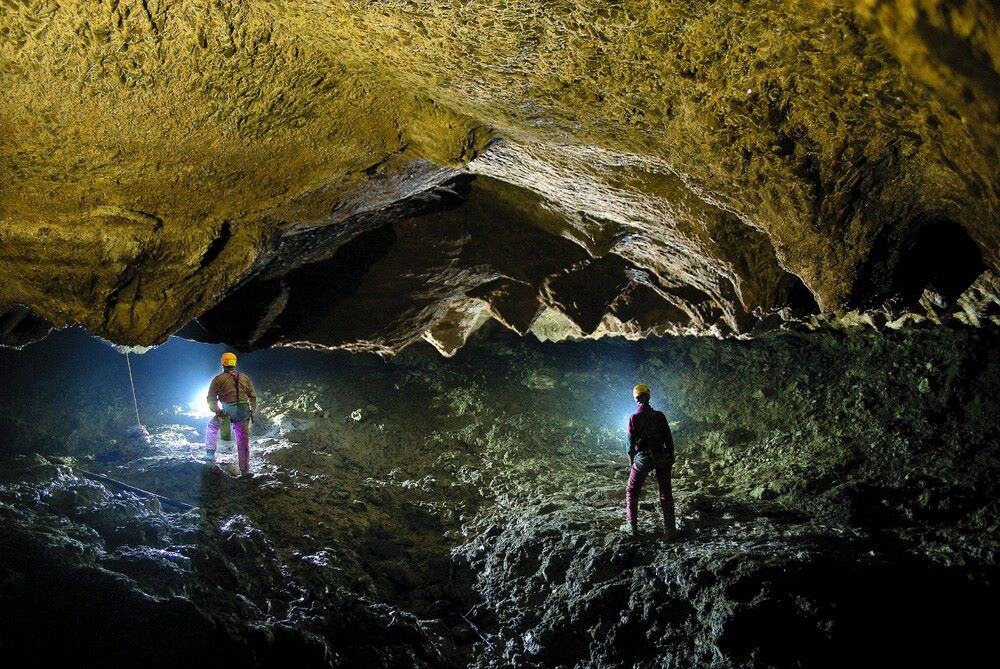
The places identified by UNESCO are as follows:
- Upper Secchia Valley, part of the Tuscan-Emilian Apennines National Park, and Lower Reggio Emilia Hills (Protected Landscape of the Reggio Emilia Hills);
- Gypsum caves of Zola Predosa (Natura 2000 site) and Bologna Gypsum Caves, the latter enclosed within the Bolognese Gypsum and the Abbadessa Badlands Park;
- Gypsum Vein of Romagna in the Ravenna area (Gypsum Vein of Romagna Regional Park)
- and finally the Evaporites of San Leo (Natura 2000 site) and the Gypsum caves of Eastern Romagna (Onferno Regional Nature Reserve) in the Rimini area.
Those who wish to take a closer look at the fascinating caves in this area should know that only a few can be visited, namely the Spipola Caves in the Gessi Bolognesi, the Tanaccia Cave and the Tiberius Cave in the Chalk Vein of Romagna, and finally the Onferno Cave in the Rimini area, with its Oriented Nature Reserve.
Tuscan-Emilian Apennines UNESCO MAB Reserve
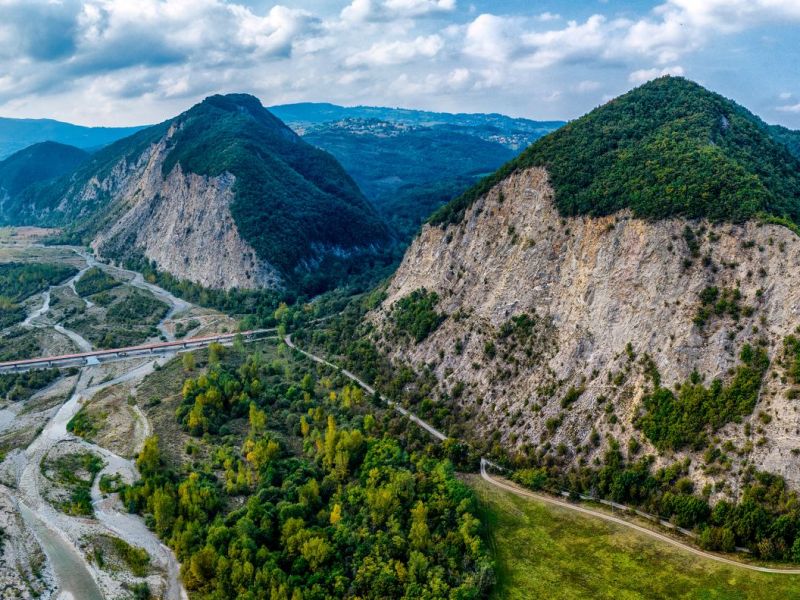
The MAB (Man And Biosphere) is a UNESCO program created to promote the human-environment balance, specifically protecting biodiversity and sustainable development.
Having this goal in mind, in 2015 UNESCO included the Tuscan-Emilian Apennines in the network of MAB Reserves, specifically identifying the area encompassing the Apennine ridge between the Cisa Pass and the Passo delle Forbici, between the provinces of Modena, Parma, Reggio Emilia, La Spezia and Massa Carrara.
This area is home to peaks that exceed 2,000 meters, such as Mount Cimone and Mount Cusna, as well as flatter areas just above sea level.
However, they share some unique features that cannot be found elsewhere. In fact, here lies the geographical and climatic boundary between Continental and Mediterranean Europe. But not only that, the Reserve contains 70 percent of Italy’s biodiversity, with more than 2,000 animal and plant species. Its forests of chestnut, beech and oak trees are an ideal habitat for wolves, golden eagles and delicate flowers such as the Apennine primrose.
As for ways to explore it, you really are spoiled for choice! In addition to the network of dedicated trails and itineraries, the Tuscan-Emilian Apennines preserves a historical and cultural heritage made up of ancient palaces, parish churches, fortresses and small villages all waiting to be discovered.
Po Delta UNESCO MAB Reserve
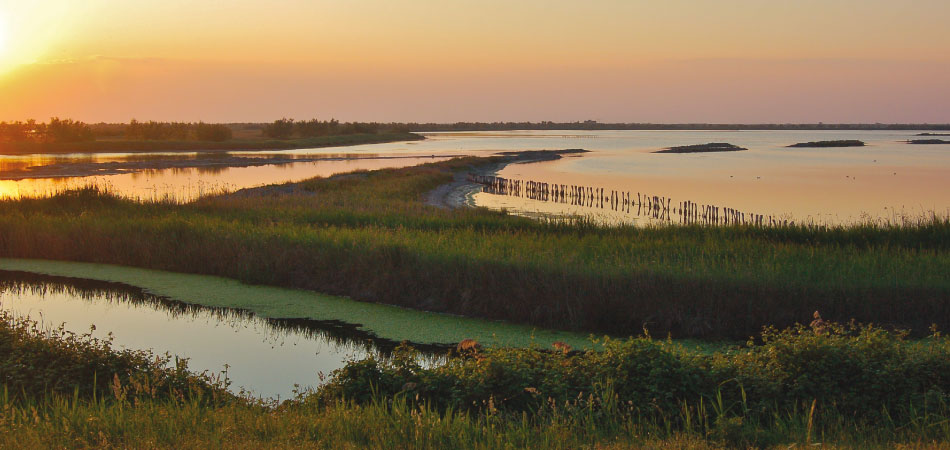
Suspended between land and water, the Po Delta is an extraordinary place that surprises visitors with its changing landscapes and the intensity of its colors. Listed as a UNESCO Biosphere Reserve in 2015, this territory is unique in our country as it represents the only existing delta in Italy. Moreover, it is one of the largest national reserves with no dams and with an outlet to the sea.
As if this were not enough, it is also an excellent example of the balance between man’s work and nature, which is now characterized by the presence of coastal dunes, wetlands, islands and sand formations, as well as more than 360 different bird species and a large colony of pink flamingos.
In Emilia-Romagna, the Reserve encompasses 7 municipalities (Argenta, Codigoro, Comacchio, Mesola, Ostellato, Portomaggiore and Goro), while another 9 are located in Veneto. Immersing yourself in its scenery is a magical experience that we absolutely recommend you try. You can do so by following one of the many tours offered by the Park, for example, a birdwatching or boat tour.
Po Grande MAB Reserve
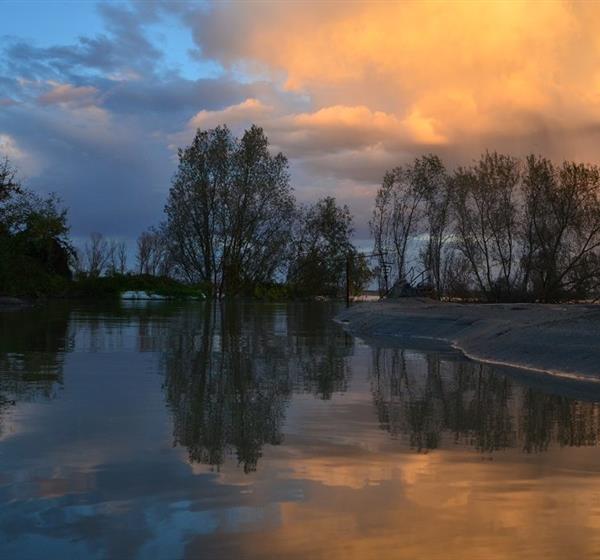
The acknowledgements given by UNESCO to the Po River area are not limited to the just-mentioned Reserve. In 2019, the so-called “Po Grande” – the central stretch of the river running through Lombardy, Veneto, and Emilia-Romagna – also became part of the MAB Reserves.
At this point in its course, the river reaches its maximum width, and is a mix of ecosystems ranging from forests to river islands, from meadows to farmland.
Although the river basin has been greatly shaped by human labor, with cereal and forage fields being one example, the Po Grande MAB Reserve holds within it an invaluable biodiversity heritage. The most widespread trees in the area undoubtedly include willow and poplar.
Author

Maria Grazia Masotti
An eternal dreamer, but I try to stay grounded. I was raised in the countryside but I love big cities. I’m always ready for a trip, as long as it’s sustainable.
You may also like
Discovering volcanoes in Emilia-Romagna
by Celestina Paglia /// August 24, 2022

Interested in our newsletter?
Every first of the month, an email (in Italian) with selected contents and upcoming events.
5 Experiences to do in the Po Delta Park of Emilia-Romagna
by Elisa Mazzini /// February 18, 2019
5 hikes to discover the Casentinesi Forests on foot
by Elisa Mazzini /// October 19, 2020
